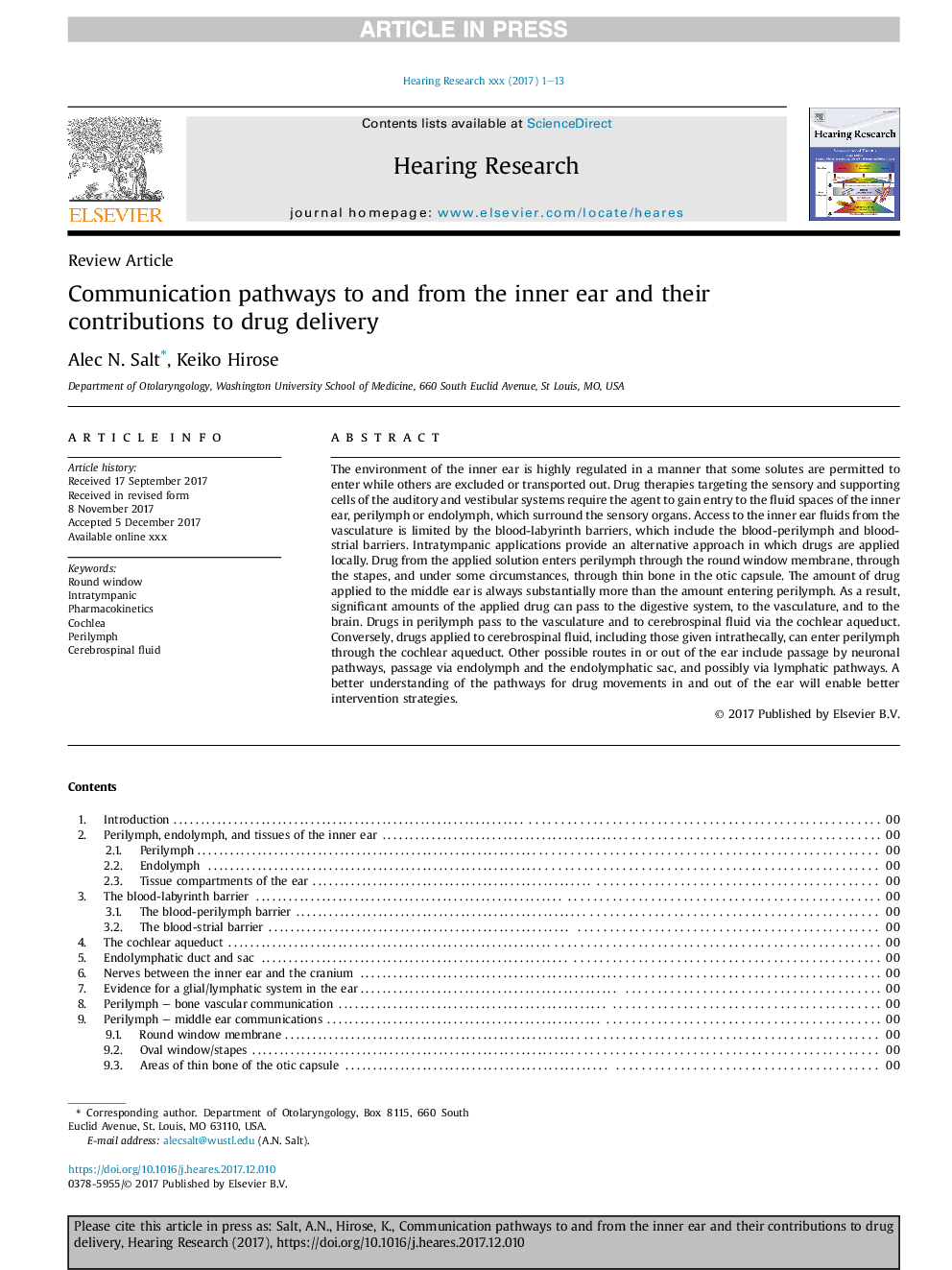| کد مقاله | کد نشریه | سال انتشار | مقاله انگلیسی | نسخه تمام متن |
|---|---|---|---|---|
| 8842378 | 1615538 | 2018 | 13 صفحه PDF | دانلود رایگان |
عنوان انگلیسی مقاله ISI
Communication pathways to and from the inner ear and their contributions to drug delivery
ترجمه فارسی عنوان
راه های ارتباطی به گوش و گوش داخلی و مشارکت آنها در تحویل دارو
دانلود مقاله + سفارش ترجمه
دانلود مقاله ISI انگلیسی
رایگان برای ایرانیان
کلمات کلیدی
موضوعات مرتبط
علوم زیستی و بیوفناوری
علم عصب شناسی
سیستم های حسی
چکیده انگلیسی
The environment of the inner ear is highly regulated in a manner that some solutes are permitted to enter while others are excluded or transported out. Drug therapies targeting the sensory and supporting cells of the auditory and vestibular systems require the agent to gain entry to the fluid spaces of the inner ear, perilymph or endolymph, which surround the sensory organs. Access to the inner ear fluids from the vasculature is limited by the blood-labyrinth barriers, which include the blood-perilymph and blood-strial barriers. Intratympanic applications provide an alternative approach in which drugs are applied locally. Drug from the applied solution enters perilymph through the round window membrane, through the stapes, and under some circumstances, through thin bone in the otic capsule. The amount of drug applied to the middle ear is always substantially more than the amount entering perilymph. As a result, significant amounts of the applied drug can pass to the digestive system, to the vasculature, and to the brain. Drugs in perilymph pass to the vasculature and to cerebrospinal fluid via the cochlear aqueduct. Conversely, drugs applied to cerebrospinal fluid, including those given intrathecally, can enter perilymph through the cochlear aqueduct. Other possible routes in or out of the ear include passage by neuronal pathways, passage via endolymph and the endolymphatic sac, and possibly via lymphatic pathways. A better understanding of the pathways for drug movements in and out of the ear will enable better intervention strategies.
ناشر
Database: Elsevier - ScienceDirect (ساینس دایرکت)
Journal: Hearing Research - Volume 362, May 2018, Pages 25-37
Journal: Hearing Research - Volume 362, May 2018, Pages 25-37
نویسندگان
Alec N. Salt, Keiko Hirose,
